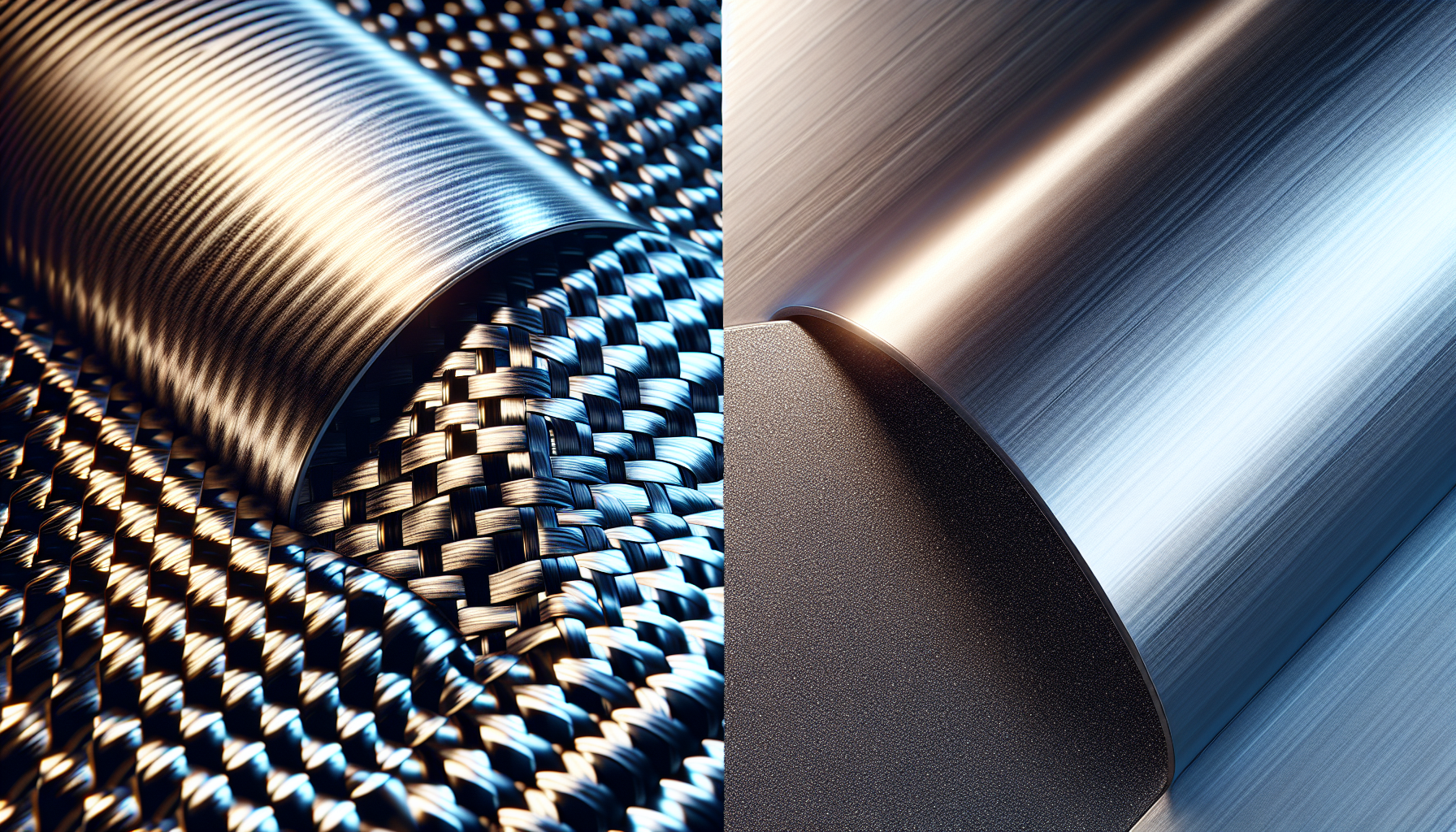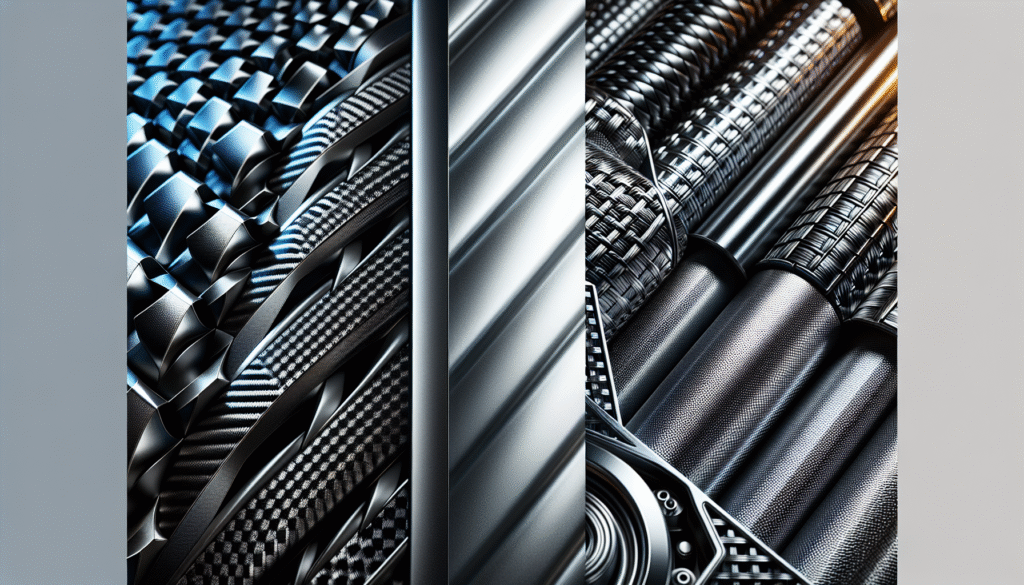Do you ever find yourself pondering the materials that make up the technology we use daily, like the frames of gimbals? I’ve often marveled at how something as sleek and efficient as a gimbal can keep our cameras steady, irrespective of our sometimes clumsy hands. When it comes to the backbone of this nifty piece of equipment, we’re typically faced with two options: carbon fiber and aluminum. But which one truly stands the test of time? Let’s untangle this web of possibilities together.

Understanding Gimbal Frames
Before we dive deep into comparing, let’s first understand what gimbal frames are. Gimbal frames are the crucial components that support the camera and allow it to pivot smoothly along three axes. They maintain stability for shooting, which is vital, especially in dynamic environments. The material of these frames significantly impacts the gimbal’s performance, durability, and, interestingly enough, the price too. So, whether you’re shooting a YouTube vlog as you weave through busy streets or capturing a serene sunset, the frame material can make all the difference.
Carbon Fiber: The Lightweight Prodigy
Characteristics of Carbon Fiber
Carbon fiber is known for its lightness and strength. Imagine a piece of material that’s both feather-like yet robust enough to withstand significant pressure. It’s composed of thin strands of carbon that are tightly woven together. Each strand is pretty much a powerhouse of durability. As a material, carbon fiber offers an impressive strength-to-weight ratio, which is one reason it’s a top choice not just for gimbal frames, but for airplane wings and race car chassis too.
Advantages of Carbon Fiber
- Lightweight: Carbon fiber gimbals are incredibly light, making them perfect for long shoots or travels where every ounce counts.
- High Strength: Despite being light, they offer high levels of durability and strength, making them prone to damage.
- Vibration Reduction: Thanks to its rigid nature, carbon fiber can absorb vibrations better, providing smoother footage.
- Corrosion Resistance: It’s resistant to environmental elements like water, so you won’t find it rusting after a rainy shoot.
Disadvantages of Carbon Fiber
- Cost: You might have to dig a bit deeper into your pockets as carbon fiber gimbals tend to be on the pricier side.
- Repairability: If damaged, carbon fiber can be more challenging and sometimes impossible to repair than metals.
- Production Complexity: Manufacturing and molding carbon fiber into precise shapes can be complex and time-consuming.

Aluminum: The Sturdy Veteran
Characteristics of Aluminum
Aluminum is a household name for metals, known for its reliability and accessibility. It’s almost everywhere—from kitchen foil to the frames that cradle your camera. This metal shines with several engineering properties that make it a reliable choice across various industries.
Advantages of Aluminum
- Cost-Effectiveness: Generally, aluminum gimbal frames are more budget-friendly compared to carbon fiber.
- Durability: It’s tough and can withstand various environmental stresses, though not as light as carbon fiber.
- Ease of Repair: Should your aluminum frame get a dent or scratch, it’s typically easier to repair than carbon fiber.
- Availability and Flexibility: Aluminum is widely available and easily manipulated during manufacturing, making it versatile for different designs.
- Recyclability: Aluminum is recyclable, which is a plus for the environment.
Disadvantages of Aluminum
- Weight: While aluminum is relatively lightweight for metal, it’s still heavier compared to carbon fiber.
- Corrosion: Although treated to resist corrosion, over time and with prolonged exposure to minerals, it can start to corrode.
- Vibration Transmission: It’s less effective at dampening vibrations than carbon fiber, which might affect footage quality.
Comparative Analysis: Carbon Fiber vs Aluminum
To simplify things, I’ve put together a table comparing the key characteristics of both materials:
| Feature | Carbon Fiber | Aluminum |
|---|---|---|
| Weight | Lighter | Heavier |
| Strength | High | Moderately High |
| Cost | Expensive | Budget-friendly |
| Vibration Absorption | Excellent | Moderate |
| Repairability | Difficult | Easier |
| Corrosion Resistance | Excellent | Good (with treatment) |
Durability in Practical Situations
There’s no doubt that both materials bring their individual strengths to the table. But how do they hold up in real-life situations?
On The Road
Imagine navigating through a bustling city to capture those candid street moments. With carbon fiber, that extra lightweight feature could save you from wrist fatigue, making it easier to switch sides or adjust angles rapidly. But, an aluminum frame, sturdy and unwavering, might reassure you during those moments when the gimbal brushes against a random bystander or a lamppost.
In The Elements
What about when Mother Nature decides to unleash her wrath? Rain, humidity, even salty air from the coast can wreak havoc. Here, carbon fiber excels with its superior corrosion resistance. Aluminum, while adequately resistant when treated, might eventually give in, especially after a few drizzly days.
During Intense Shoots
Let’s say you’re filming an action-packed sequence: cars zooming by, crowds roaring. The vibrations on set can affect stabilizers. A carbon fiber gimbal’s ability to absorb these vibrations might just gift you those crisp, smooth shots. On the flip side, aluminum could send waves of movement through to your camera.
Environmental Impact
Manufacturing and using these materials doesn’t just affect our shooting experiences; there’s an environmental angle too.
Carbon Fiber’s Environmental Footprint
The production of carbon fiber is energy-intensive, which often leads to a larger carbon footprint during manufacturing. Additionally, end-of-life disposal poses challenges as recycling carbon fiber isn’t straightforward.
Aluminum’s Environmental Concerns
Aluminum production involves mining, which can have substantial ecological impacts, but recycling aluminum can drastically reduce these concerns. Recycled aluminum uses about 95% less energy than producing new aluminum, making it an environmentally better option in the long run.
Making The Right Choice
The million-dollar question: Which one should you choose? That largely depends on your personal needs and situations:
- Budget Constraints: If your wallet is feeling a bit light but you need something reliable, aluminum may be the way to go.
- Need for Lightweight Gear: Working long hours or often on the move? The lightweight nature of carbon fiber could make life a lot easier.
- Shooting Conditions: Frequently in wet or humid conditions? Carbon fiber’s corrosion resistance can be a lifesaver.
- Environmental Considerations: Concerned about ecological impact? Opt for recycled aluminum frames.
Personal Preference
At the end of the day, like choosing between oatmeal and eggs for breakfast, it boils down to what suits you best. Some might revel in the sleek, feather-light feel of carbon fiber, while others might take solace in the firm, comforting grip of an aluminum frame.
Conclusion
Navigating the world of gimbal frames doesn’t have to be daunting. By understanding the key strengths and drawbacks of carbon fiber and aluminum, you can make an informed choice tailored to your shooting demands and personal preferences. Whether it’s the whisper-light nature of carbon fiber or the steadfast reliability of aluminum, each has something unique to offer. As for me, I find comfort in knowing that with the right choice, my gimbal will withstand the demands of my creative adventures, much like a trusty friend always ready for the next escapade.
![Best Gimbal For DJI Mini 4 Pro In 2025 [Top Picks + Quick Deals]](https://droneaperture.com/wp-content/uploads/2025/06/best-gimbal-for-dji-mini-4-pro-in-2025-top-picks-quick-deals-1-300x171.png)
![Top 5 Drone Gimbals For Cinematic Footage Under $500 [2025 Tested]](https://droneaperture.com/wp-content/uploads/2025/06/top-5-drone-gimbals-for-cinematic-footage-under-500-2025-tested-300x171.png)
